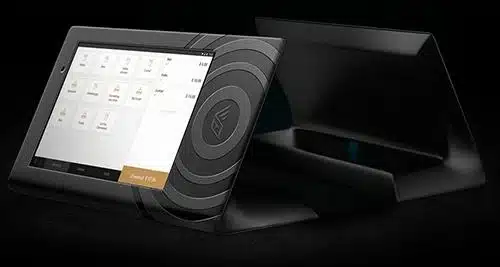Event payment technology company Billfold POS has been offering an RFID-based solution for more than three years to enable fast, contactless payments at events, clubs and bars. The solution, used by caterers and venue owners, allows visitors to create a virtual wallet and make payments via an RFID-enabled wristband. Now the system is being reviewed by existing and potential customers for a new use case: lowering COVID-19 infection risks by making entrance and payment processes touchless for visitors, as well as reducing crowding.
This month, the technology company is releasing a short-term solution for businesses opening after quarantine, in the form of an ID precheck RFID– and QR code-enabled wristband that allows music fans to enter venues without having to touch keypads or share cards with bouncers or other employees. That, the company says, will also decrease the amount of time people spend queueing up at entrances or points of sale (POS) in close proximity to one another.

The company has long-term plans as well to reduce infection transmission risks for stadiums, airports and other public spaces, by providing a Billfold POS app that consumers could use to pay for products and services, without touching a keypad or presenting a card or cash. That solution is expected to be released in January 2021. This year, however, as businesses reopen their doors under social-distancing constraints, Billfold POS is focusing on a short-term immediate solution, which is a modified version of its existing technology, according to Stas Chijik, the company’s co-founder and CEO.
Billfold POS’s passive HF RFID solution is being utilized for event access and payments at music venues around the world. The New York-based company launched the system to make catering and event access faster for large-scale events in its own city and beyond (see Sales Up By 40 Percent for New York Venues With RFID Wristband). Customers have been seeking out Billfold POS, Chijik says, asking how they can let people into their venues with limited contact.
The Billfold POS system offers an online registration option that enables users to register themselves into the system by providing personal information, date of birth and a credit card account number for payment. When they arrive onsite, however, they are typically provided with a wristband and they still need to input that bracelet’s ID number into a keypad at a kiosk in order to link to their personal data.
With the new version of the solution, individuals can eliminate the kiosk touch-screen process by using a QR code on the wristband. That QR code, attached to the back of the bracelet, is linked to the band’s RFID number. After registering online, a person arrives onsite and is given a wristband. Using the Billfold POS app, he or she can then use a smartphone to scan the QR code, which automatically links that wristband with the individual’s information.
The wristband has a built-in 13.56 MHz HF RFID tag compliant with both the ISO 15693 and ISO 14443 standards. The HF functionality is accomplished for access, while Near Field Communication (NFC) can be used for payments. The RFID tags built into the wristbands were provided by Australia’s 4ID Solutions. Billfold provides HF readers designed specifically for the efficient movement of people through gates. “We’re creating the system to be fast,” Chijik says, so NFC—which requires a closer positioning of a tag to the reader—could slow the entrance queue.
As visitors enter the venue, they each tap their wristband at the gate, and the Billfold POS software confirms each individual’s authenticity and age, then displays a green checkmark on the access-control displays to indicate that he or she may enter. If a person is underage or if the wristband is not valid, a red light is illuminated. The bracelet locks in place on a user’s wrist so that it cannot be removed and handed to someone else. If a venue prefers, it can also require that users hold up their ID as they enter so it can be compared against the data linked to the bracelet.
 Stas Chijik
Stas Chijik
Once the person is inside the venue, the wristband’s embedded RFID tag manages that individual’s payments and access events. “Now your wristband is your credit card, your ID and your ticket,” Chijik says. The latest version of the system reduces physical touch points by enabling ticketholders to pre-select tips for personnel at the venue during pre-registration. They can also opt out of using PIN codes that would otherwise be required to complete a payment transaction. Now, when making a purchase, users can simply tap the wristband for the payment to be accepted.
During the design stage, Billfold POS worked with clients to understand what their greatest concerns would be as they re-opened their businesses. “We knocked on the doors of our biggest clients and asked, ‘What are you doing for reopening?’” Chijik says. Many, he adds, “responded within minutes. They said, ‘We need to talk.’”
In addition, the technology’s access-control feature can track how many individuals have entered a music venue. An RFID readersituated at the entrance and exit captures the ID number of each individual who passes, then forwards that data to the Billfold POS software, which maintains a real-time count of those onsite. If, for example, a maximum of 50 people were dictated, the system could identify when that maximum occupancy had been reached, after which no new individuals would be admitted until others left.
Several ticketing and catering companies are currently in discussions with Billfold POS to test or launch the technology, the company reports. “They all want to reopen in ways that make their customers feel comfortable,” Chijik states.


